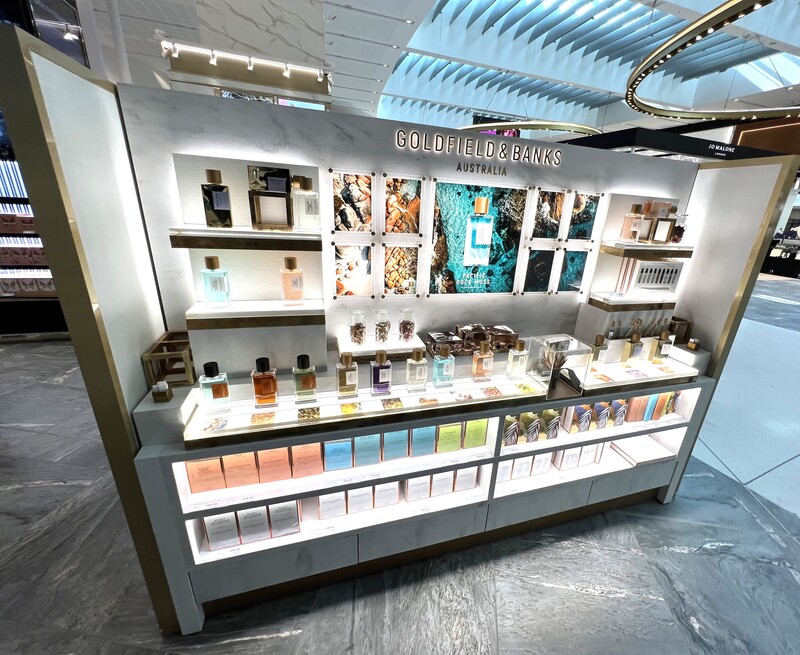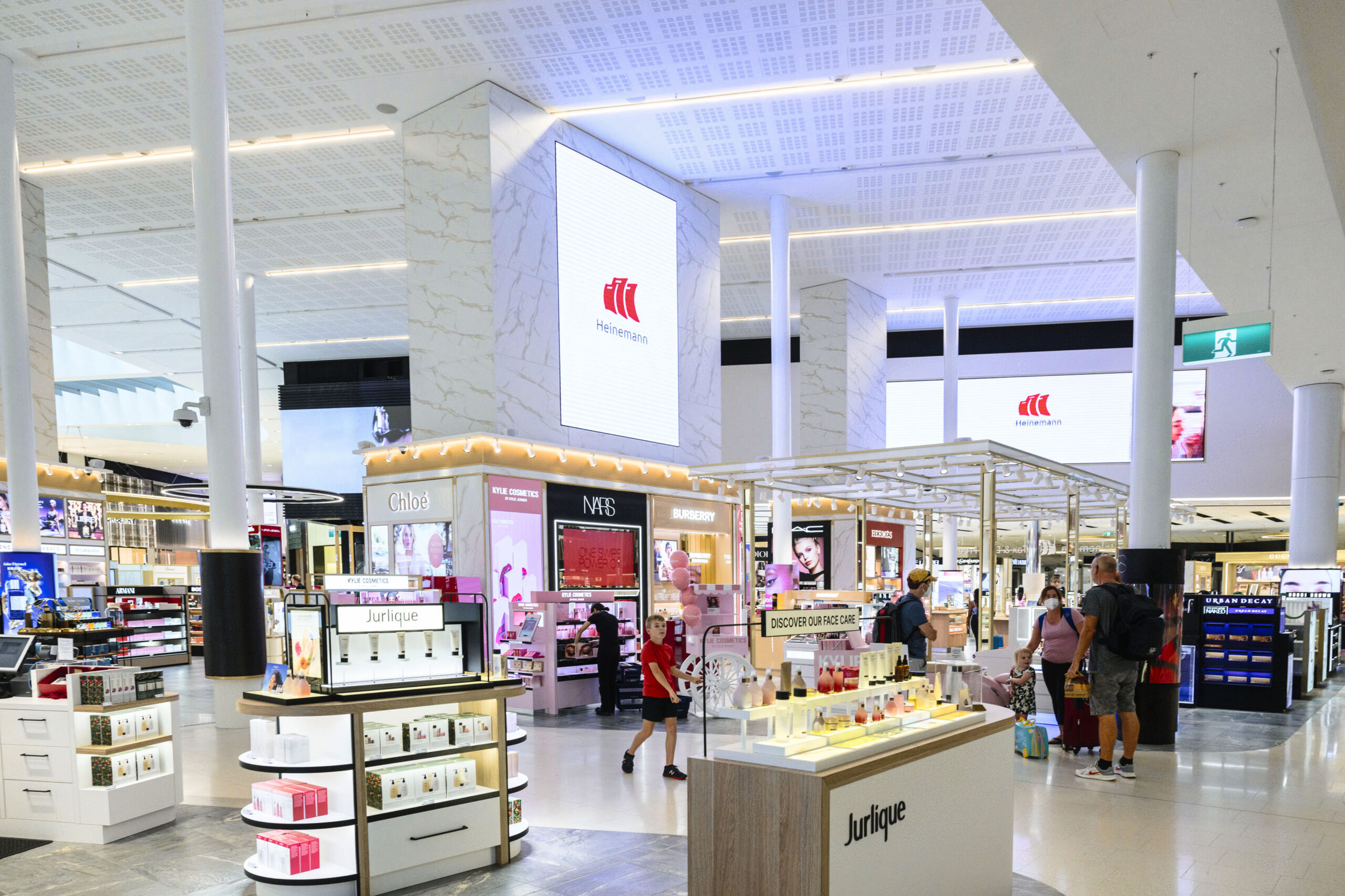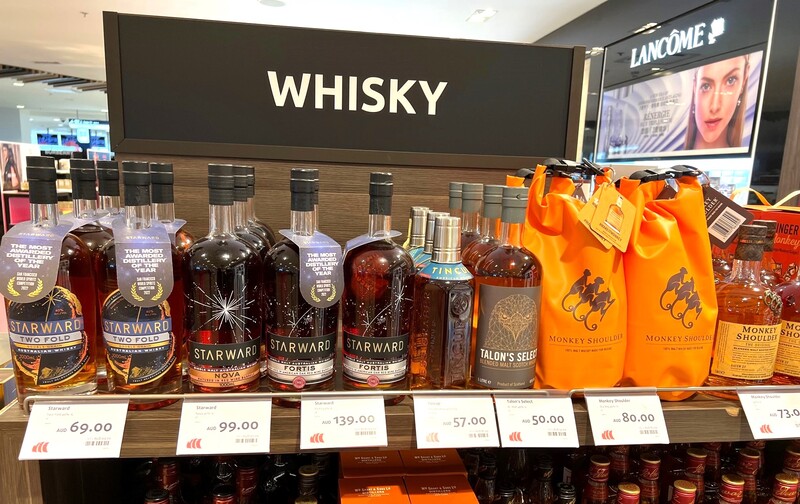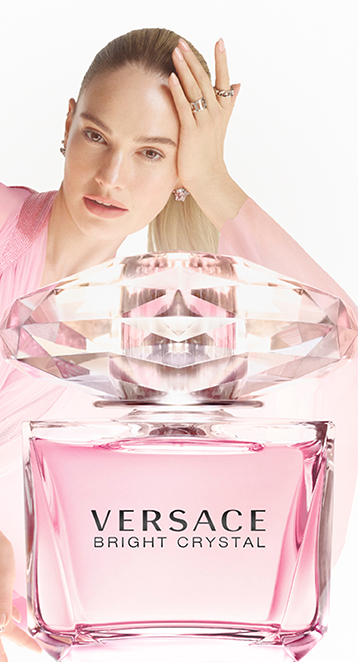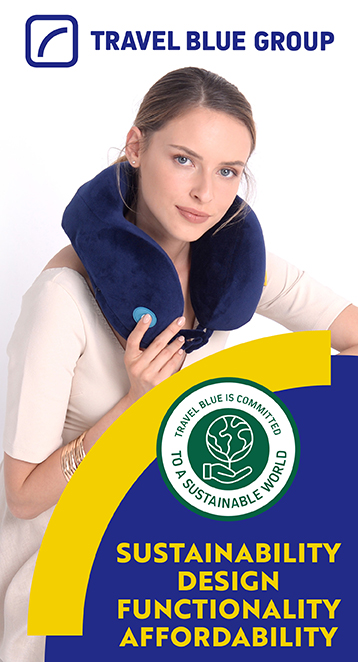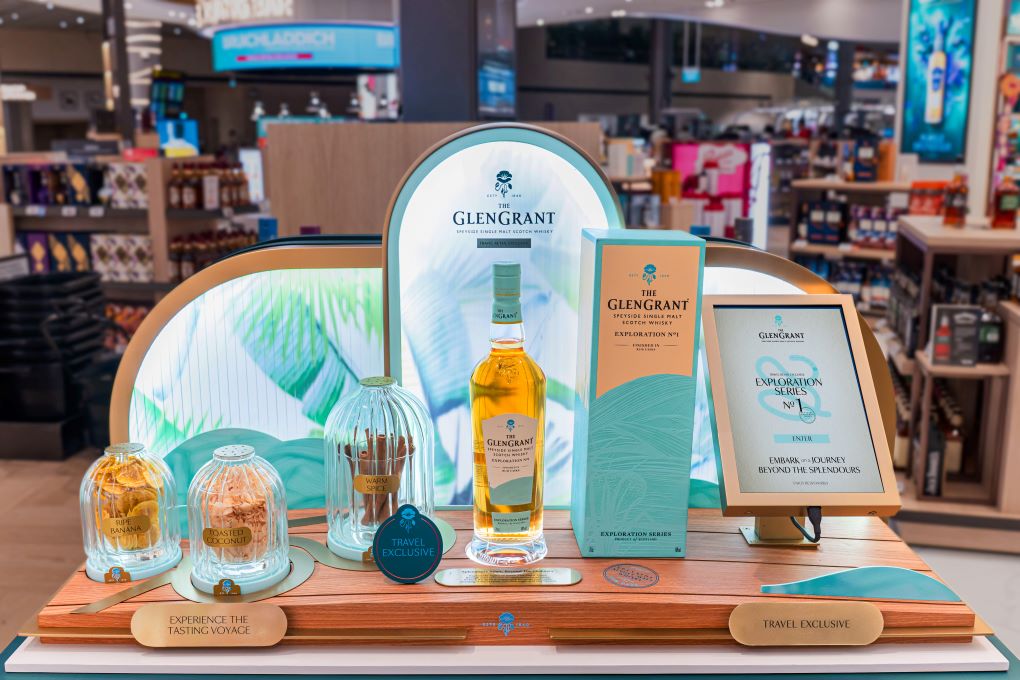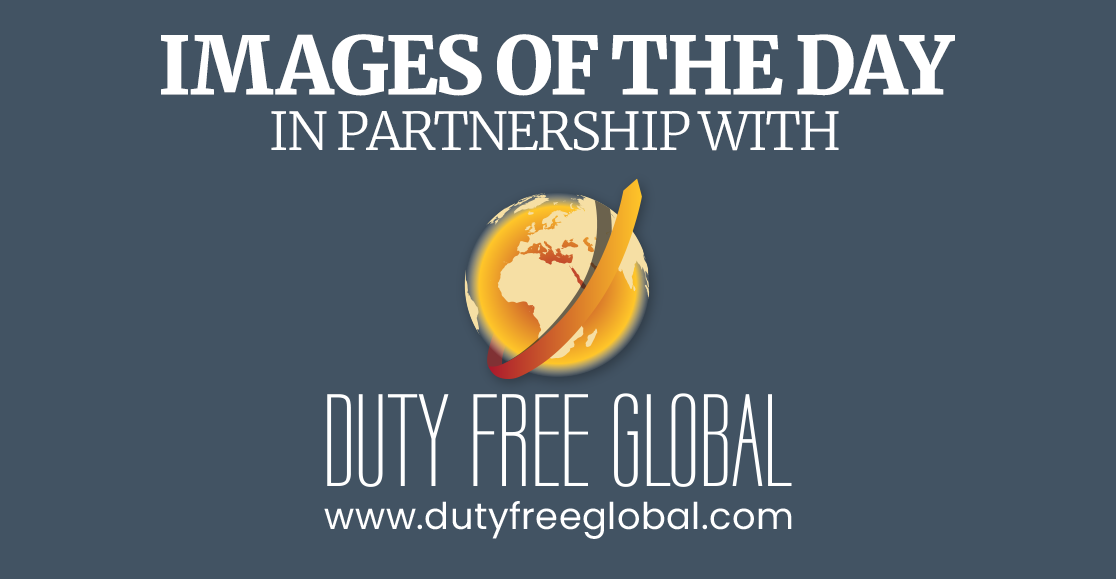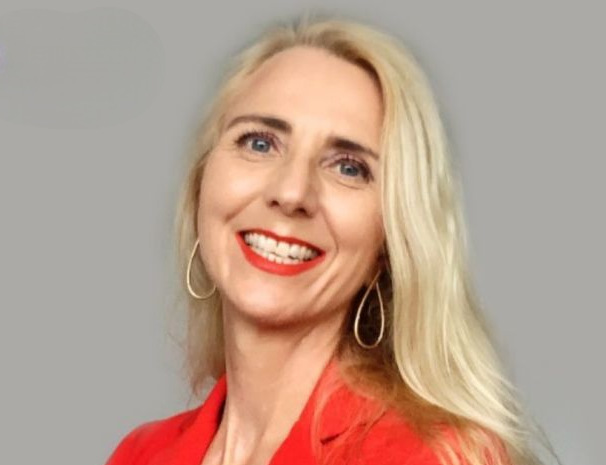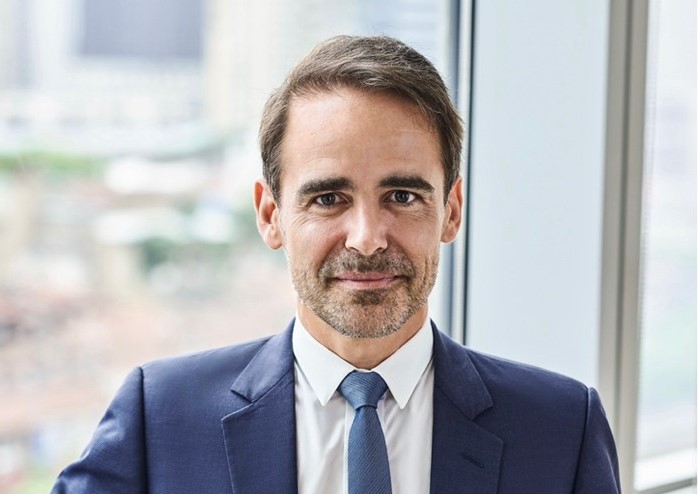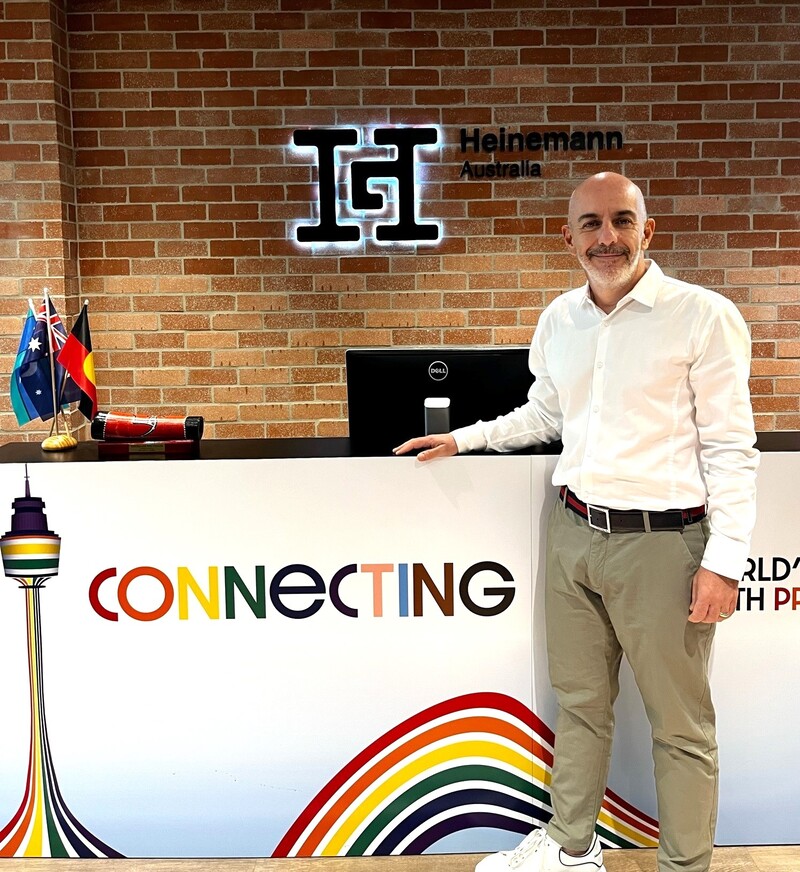
For Heinemann Australia Managing Director George Tsoukalas, the inauguration of the company’s luxury beauty, fashion and accessories store at Sydney Airport Terminal 1 on 16 February represented a triumphant and emotional moment following the travails of the COVID-hit past three years. Martin Moodie caught up with him at the retailer’s Sydney headquarters on the big day.
It’s just turned 8.30am and George Tsoukalas’ smile as he greets me is almost as bright as Heinemann Australia’s Sydney Airport offices, all dressed up in a rainbow palette as the company – along with the whole of the city – prepares to celebrate Sydney WorldPride.
The global not-for-profit festival, which incorporates Sydney Gay and Lesbian Mardi Gras, is a mass celebration of the LGBTQIA+ community that runs from 17 February to 5 March and Heinemann is keen to play its role in the party.
But first it has its own festivities to take care of. Later in the day, the company will co-host the joint inauguration of its revamped luxury beauty, fashion and accessories offer and Sydney Airport Terminal 1’s extended luxury precinct (within which Heinemann runs the Hermès boutique).
After the formalities of the afternoon’s inauguration, a Gala Dinner will take place in a marquee on the airfield before a late night after party at the uber-trendy ivy Sydney in the heart of the city’s CBD.
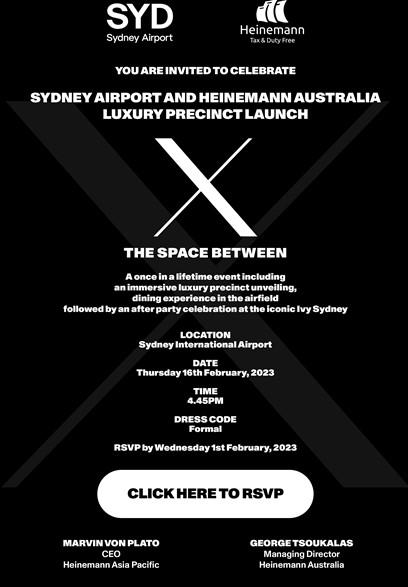 No-one could begrudge Tsoukalas and his team the opportunity to celebrate given the COVID-related hardships of the past three years, which via a combination of inter-state and international travel restrictions ravaged the business. Inevitably that’s the context to consider the scale of today’s achievement and Tsoukalas pulls no punches about how tough things were and how good it is to have come out the other side.
No-one could begrudge Tsoukalas and his team the opportunity to celebrate given the COVID-related hardships of the past three years, which via a combination of inter-state and international travel restrictions ravaged the business. Inevitably that’s the context to consider the scale of today’s achievement and Tsoukalas pulls no punches about how tough things were and how good it is to have come out the other side.
“It’s a bit numbing to be honest with you,” he says. “I started here four years ago so I only saw seven months of proper trade. During that time, we were right in the middle of renegotiating the contract with Sydney Airport for the extension. And as part of that, there was this brand new store format. And that all stopped.”
As did the state and the country. The details of the shutdown are seared into Tsoukalas’ memory. “It was the worst. 28th of March 2020, 6am. A phone call from the government to say borders are closing – you need to shut down nine stores by 11.59 in the evening. I was the Head of Operations and had to call my senior leadership team and say, ‘I need you guys to come in because we need to shut all of our stores.’
“It was incredibly painful. We had people who left their shift that day not knowing what tomorrow was going to bring for them. The thing that I’m most proud of is that we had weekly contact with our team. We had Teams meetings, Zoom meetings, Skype meetings – we communicated constantly with them. But unfortunately we had to let some good people go both here in corporate office and more so in the stores.
 “At one point in 2019, we were 550 people in-store. It’s 10,000 square metres of retail and you need the team to be able to service that. So we needed to make some tough decisions. What’s great is that when we started to reopen and our recruitment began again, many of our team members had waited because they knew that at some point it would come back.
“At one point in 2019, we were 550 people in-store. It’s 10,000 square metres of retail and you need the team to be able to service that. So we needed to make some tough decisions. What’s great is that when we started to reopen and our recruitment began again, many of our team members had waited because they knew that at some point it would come back.
“I think because of the culture that we’ve built, and because of the fact that they love working at the airport and for us, they waited. So we’ve been able to recruit quite a few of our team members back into the business, which is exciting.
“It was really, really tough, gruelling. But I’ve got to tell you, I wouldn’t want to go through it with any other business. The way this business approaches those things – it’s because of the fact that it is a 143 year-old family business. It’s one of our guiding principles… we are family.”
Sometimes, such principles fall away in the face of crisis but here it was different, Tsoukalas insists. “This is who we are as a business,” he comments. A combination of company support (financially and through various care packages) and the government’s JobKeeper programme helped a lot of team members weather the storm.
“We did a whole lot of things just to keep them engaged with us. And that’s why we’ve come out the other end, stronger, more resilient.”
From darkness into light
“So today is really a celebration of a couple of things. Of a brand new store and of our extended partnership with Sydney Airport. But more importantly, it is a celebration for the team, because they’ve seen the worst of it, not only emotionally through the pandemic but also physically in-store.”
In October 2019 Heinemann put up the hoardings in T1 in the anticipation of work commencing on the ambitious revamp. Throughout the most prolonged and painful crisis in travel retail history and the country’s and state’s various lockdowns and constraints, the team worked with those hoardings in place. “So I think, psychologically, for the team to actually see this come to life is probably the most exciting thing for me,” Tsoukalas comments. “All the technical and glittery stuff is fantastic and that’s really all about the passenger and the consumer.
“But for the team… you walk through the stores and they’re smiling from ear to ear and you see them interacting with customers. It’s really exciting. We’ve worked extremely closely with the Sydney Airport team, which you’ll see today.”
Expanding on that point. Tsoukalas praises the “harmonious” nature of the respective Heinemann and Sydney Airport retail offers. “It’s really about the passenger and the customer, as opposed to visiting duty free [and saying] ‘Is it Sydney Airport’s or Heinemann’s?’ The passenger gets a complete experience once they clear security. And that was critical for Mark [Zaouk, Sydney Airport Executive General Manager Commercial] to have a homogenous space where people feel comfortable to browse, walk around and experience.”
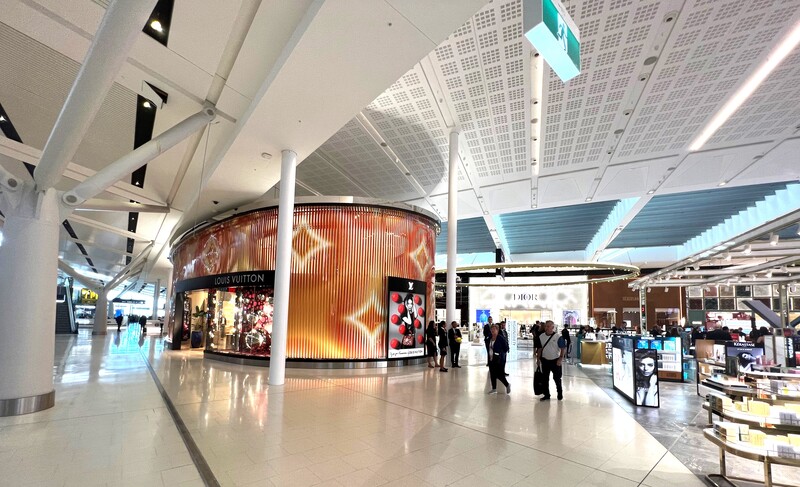
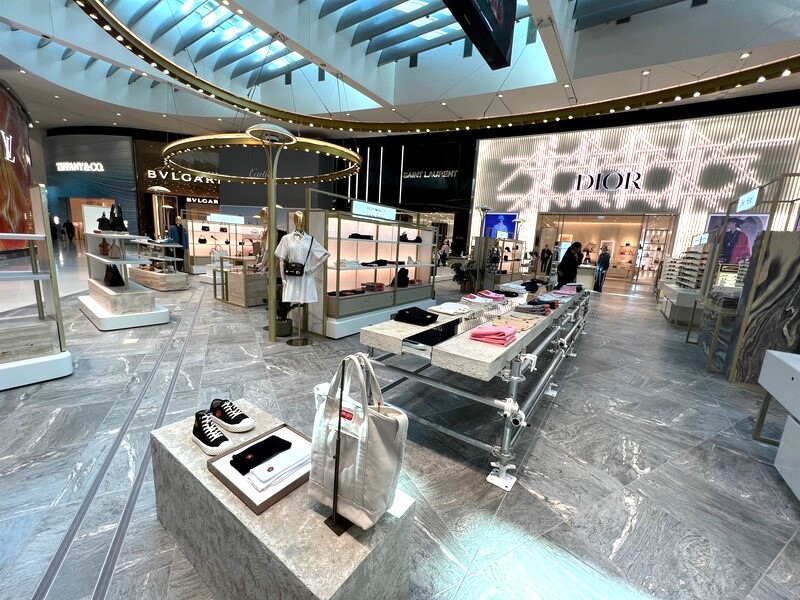
Tsoukalas says the new-look T1 space offers a much more open, airy and inviting ambience than in the past. “From a design perspective, what we tried to achieve – and what I think we did achieve – was the look and feel of the luxury Sydney coastline. So when you see the materiality and some of the colours, it’s reminiscent of that real luxury coastline if you think about standing on south Bondi and looking up to North Bondi and trying to take those cues.
“So you’ll see an area that is very cohesive and looks like one store. You’re going to see probably the best beauty hall in the region with the addition of some 20 exclusive brands. We’ve expanded our beauty footprint to capitalise on key trends like fragrance and niche fragrance and that millennial fun colour, which we didn’t really have pre-pandemic. We were a traditional beauty retailer, but we’ve been able to bring in some new brands and really talk to that new millennial customer who expects to see those brands in an environment like Sydney Airport.

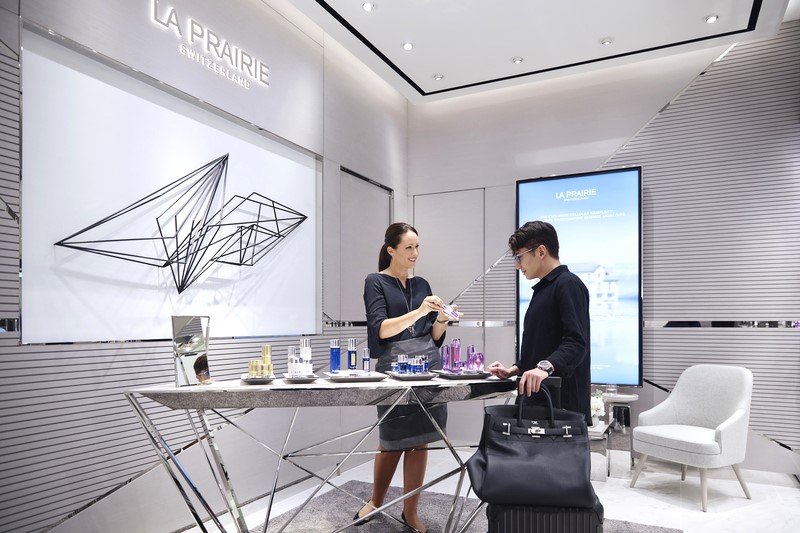
“So we have Kylie Jenner, Burberry makeup, Kora Organics. We have introduced a clean skin offer… focusing on key trends that we believe are here to stay. Rhoda [Severino, Senior Manager, Corporate Affairs at Heinemann Asia Pacific in Singapore] and the team are doing a really big piece of work around sustainability from a product perspective. We have introduced the Future Friendly concept, which is a fusion of products that have gone through scrutiny with relation to why they are so future friendly.
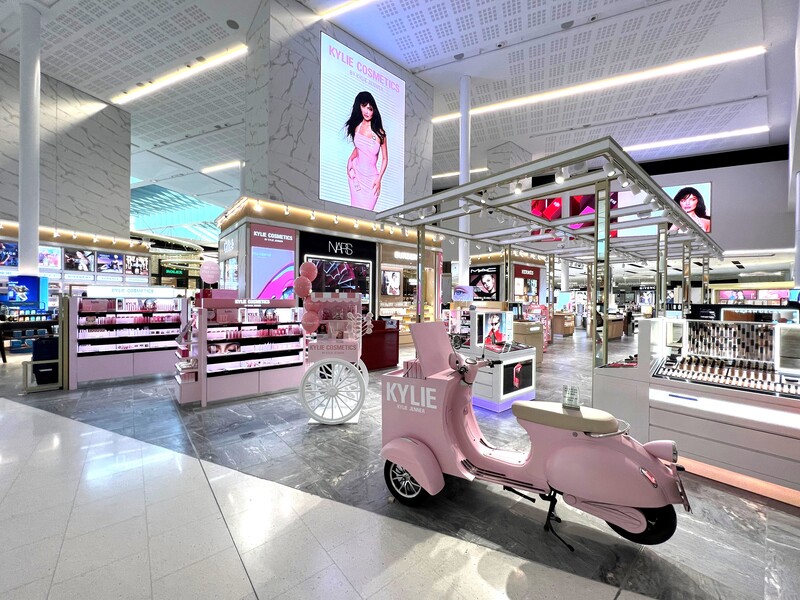
“You’ll see an expanded luxury watches and jewellery offer with many new brands, including names like Panerai and Hublot and IWC and Breitling. From a fashion perspective, we looked at what Sydney Airport is offering – high-end luxury, 22 boutiques.
“We have worked on a fashion offer that is complementary to theirs. We don’t want to move the dollar from one to another, we want to grow the pie. So five affordable luxury brands that have never been seen at international airports in the region – Lanvin, MM6 Maison Margiela, Chloé, Kenzo and Highsnobiety Gate Zero.”
The presence of Chanel beauty is a particular coup as the famous French brand is not available anywhere else in a New South Wales duty free store. Even more impressively, Heinemann has partnered in the launch of the Chanel Espace de Parfum concept, a stunning showcase of all Chanel perfumes ever produced, including discontinued and limited-edition lines.

Balance between niche and mainstream popular favourites is key, Tsoukalas emphasises. “We’ve got the big brands that make sense to the general customer and we’ve also got a really nice offering of brands that are exclusive to us either globally or in the region.”

That offering includes a commendable focus on Australian brands such as Kora Organics making its Sydney Airport debut; the popular Jurlique skincare range; and acclaimed local fragrances from Goldfield & Banks.
Heinemann is also working on some Australian fashion concepts for duty free, though the initial focus for that category will be in domestic terminals 2 and 3 (see panel below) where some 40 local fashion brands will feature. That new platform and the retailer/brand relationships that develop out of them will eventually propel the Australian fashion offer in T1, Tsoukalas says.

Simply unforgettable
Asked about Heinemann Australia’s philosophy when it embarked on the mission to revamp the Sydney offer, Tsoukalas replies, “It was to create the most unforgettable experience for a passenger at an international airport so that their pre-travel psyche is, ‘I want to get to that airport earlier and to spend a couple of hours just exploring.’

“We also want to create moments from an experiential perspective that are unexpected. So we’ve got three incredible pop-up spaces and what you’ll see in those spaces in our programme over the next 12 months will not be just about brands, but also about experiences.

“Why wouldn’t you have an art installation? Yes, the brands are selling product, but it’s about creating a moment and an experience. Why wouldn’t you work with a brand that is not currently a part of the assortment but wants to test and trial something and do something incredible there?”
In another enhancement of the shopping experience, Heinemann has created a gifting station where customers can have their purchases gift-wrapped. “In a nutshell, what we set out to do as a team was to create an environment where people just want to spend time. To surprise and delight,” Tsoukalas comments.
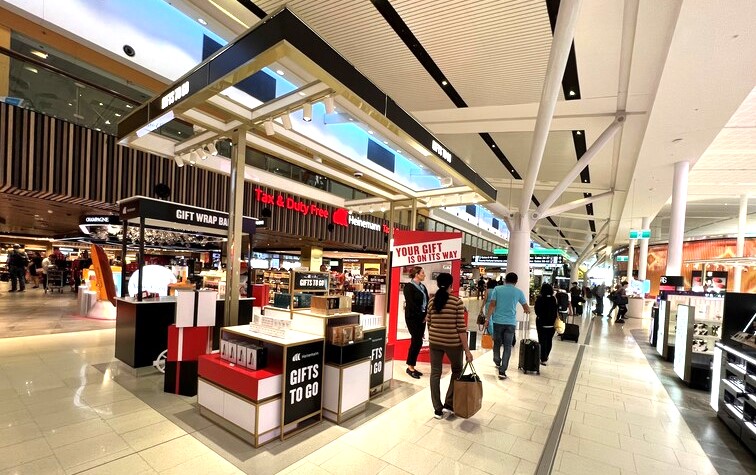
The Heinemann Australia boss is proud of the way that the Sydney environment and offer stands apart from most traditional duty free stores. The design has allowed the company to think differently, he says, citing the ceilings in the fashion atrium space that have been raised to an impressive 11 metres. “The design lends itself to doing something a bit different – it’s not just about a back wall and a gondola,” he says.
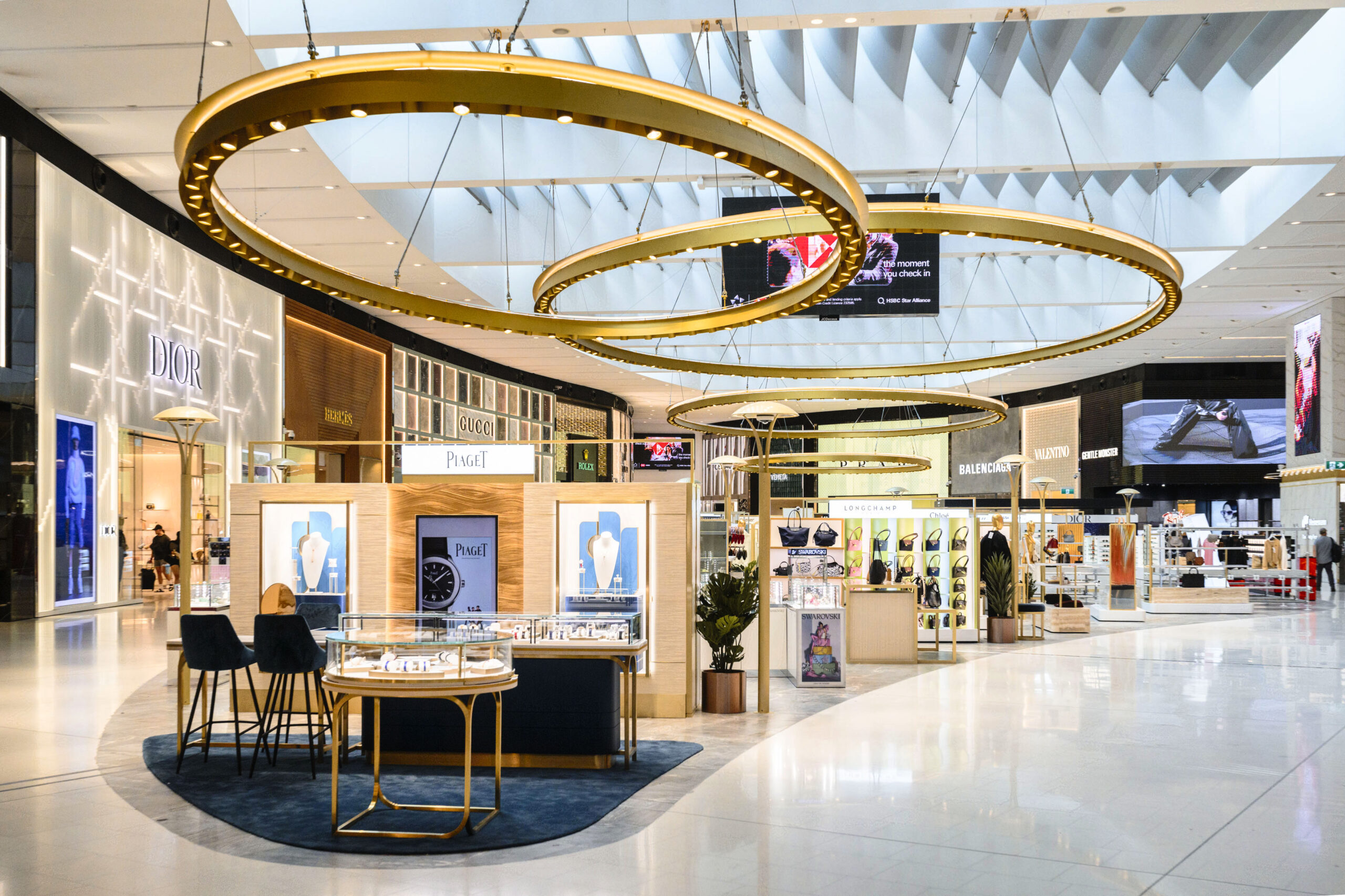
Travel recovery accelerates
One year on since Australia reopened its borders to the world, passenger traffic is picking up encouragingly. Travel figures for January by key nationalities, Australians, New Zealanders, Americans, British, Indian and South Koreans were all above 70% of pre-pandemic levels with total international passenger traffic equivalent to 73.9% of January 2019 figures. That represents a sharp improvement on the 46.2% and 48.7% ratios in November and December 2022.
“Aussies love to travel and there have definitely been peaks in revenge spend,” Tsoukalas observes. “What we found, in general, is that the Australian passenger is spending a little bit more than they did pre-COVID.”

The big step forward will come, however, when the Chinese travel to Australia in much greater numbers. Chinese passenger numbers were still down -77.2% in January compared with the same month in 2019, partly driven by lack of airline capacity. “It’s no surprise to anyone that the numbers suffer when China is missing from an airport retail environment,” he notes.
“The announcement in January of their borders relaxing and their ability to travel is great. But we haven’t seen it materialise yet to any degree. It’s going to take some time for airplanes to get back into the air. However, what we do see is that when there is a China flight, there’s definitely a spike in the average transaction value.”

In these early days of recovery, the Heinemann team is evaluating how the post-pandemic Chinese traveller responds in terms of their holiday priorities and spending behaviour. “Will they be the same Chinese traveller as pre-pandemic? Will they be booking a flight to Australia to see the Harbour Bridge for five minutes and then spend on luxury? My gut says no. I think there’s going to be a shift in that Chinese passenger profile.
“So we need to monitor things and ensure that we can shift our assortment accordingly to be able to manage any change. That’s the big unknown for us at the moment. It’s great that they’re definitely coming back. We went from three flights a week and now we’re at 14.”
Around 17% of Sydney’s population has Chinese ancestry, meaning a regular two-way passenger flow between China and Australia in non-pandemic times on top of the traditionally dominant group tour base. With Australia excluded from the original 20-strong list of countries approved for outbound group tours, Heinemann initial focus therefore is on free independent travellers (FIT).
The tour group customer represented a more predictable spending behaviour, Tsoukalas says, than the FIT consumer who will represent an ever-increasing share of Chinese outbound travel. Providing an appropriate offer to this evolving consumer demographic will be key, he says.
Health and wellbeing has been one category to generate increased consumer attention and Heinemann has adjusted its strategy accordingly. “We moved away from things like traditional shark fin extract to this health and wellbeing 2.0 and really focused on Australian brands such as Vida Glow (pictured below), Edible Beauty and Beauty Chef. That’s been a real success story for us.”
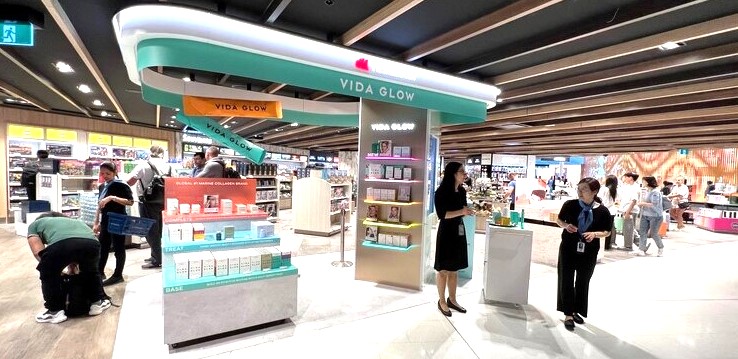
So has local confectionery, which now represents 40% of the category’s sales. Tsoukalas cites chocolate brands such as Cacao, Koko Black and Darrell Lea, all introduced during the pandemic, which he says “are absolutely flying”.
He continues, “That’s part of the whole local provenance strategy for us, to ensure that we offer the best of local foods. And more than just Vegemite, and Tim Tam with all due respect. They are great and they’re iconic. But what else is there in that local food space?”
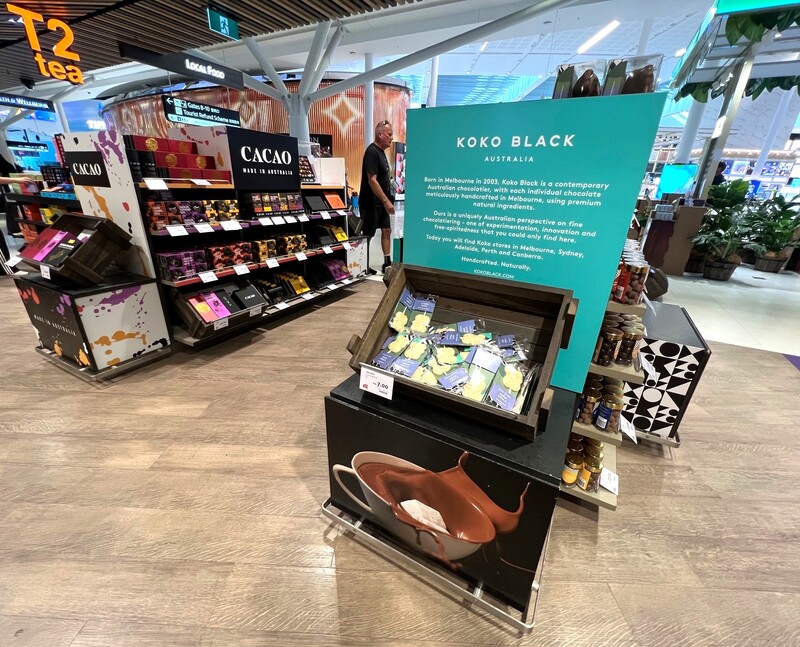
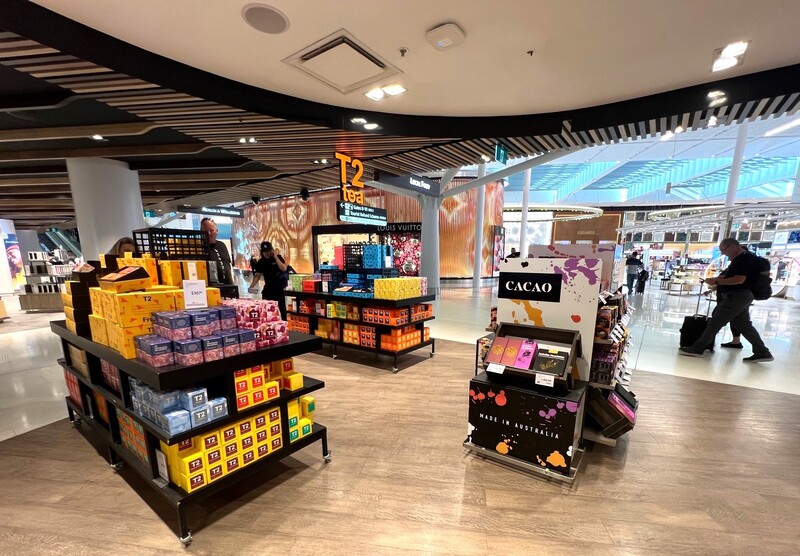
Walking the walk with diversity and inclusion
As the conversation turns to how Heinemann Australia is honouring Sydney WorldPride, Tsoukalas widens the reference to a company-wide commitment to championing diversity and inclusion. “For me, the ability to create a space that is safe for everyone to come to work is paramount,” he says. “And that means that we need to be diverse, we need to have inclusion, and we need people to feel they belong.
“We’re super lucky from a nationality perspective. The last count for us is that 37 different nationalities work at Heinemann Australia. From Ecuador to Greece to Singapore – it’s incredible. But that’s only one part; it’s really about all those deeper levels of diversity. Celebrating who you are and the ability to not worry about sexual orientation, religion and such things at work is critical for us.
“So we are doing Mardi Gras. We are doing WorldPride, Ramadan, Passover, we are celebrating everything. Pride is globally so iconic and the fact that it is here in Sydney this year was a perfect platform for us to showcase it. It was a very simple decision for the whole team.
“We’re doing great activations in-store. But it has a double meaning for us in that we will use Pride to also launch our diversity, equity, inclusion and belonging strategy to the wider team. It’s about things that we’ve been working on collaboratively with the broader communications team, our HR team in Singapore and our HR team globally. It’s really pushing the envelope on the things that are important to our people – including paid maternity leave, domestic violence leave, community service leave, all those kinds of things.

“It’s really powerful. And it’s really important to me to listen to the team and act on what they say. For example, we are in the first stages of understanding what a Reconciliation Action Plan looks like for us [Editor’s note: a Reconciliation Action Plan enables organisations to sustainably and strategically take meaningful action – based on the core pillars of relationships, respect and opportunities – to advance reconciliation for Aboriginal and Torres Strait Islander peoples, increasing economic equity and supporting First Nations self-determination*]
“So all of the team here have done the cultural awareness, indigenous and Torres Strait Island training. We’re at the early stages but this is the next big piece of work that we want to do here.” Tsoukalas says it is “absolutely non-negotiable” that everyone who walks through the Heinemann Australia door feels safe at all levels. “I’m not talking about just physically, it’s just that they can be who they want to be.”
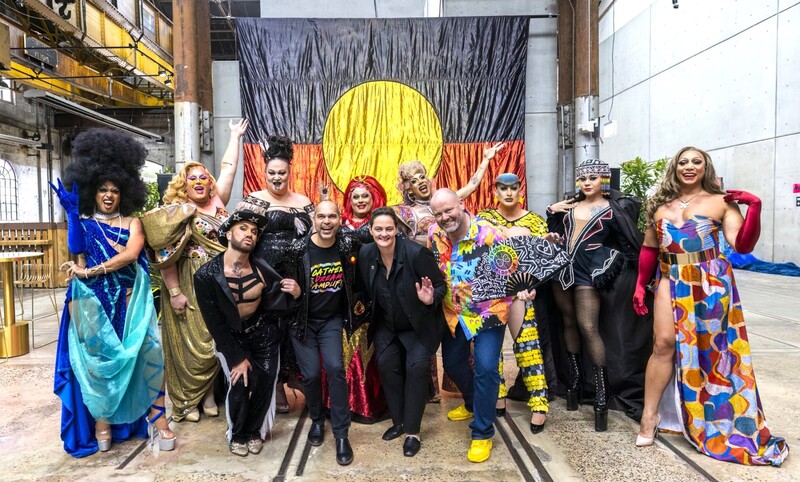
To ensure that happens, Heinemann has unleashed a series of initiatives, including programmes on unconscious bias, on what constitutes privilege, and on mental health awareness. There is also a big push towards gender equality. The company employs more women than men with females constituting 80% of senior leaders under head of department level. “We just did an exercise on pay parity and scored a massive tick, which I’m super proud of,” he comments.
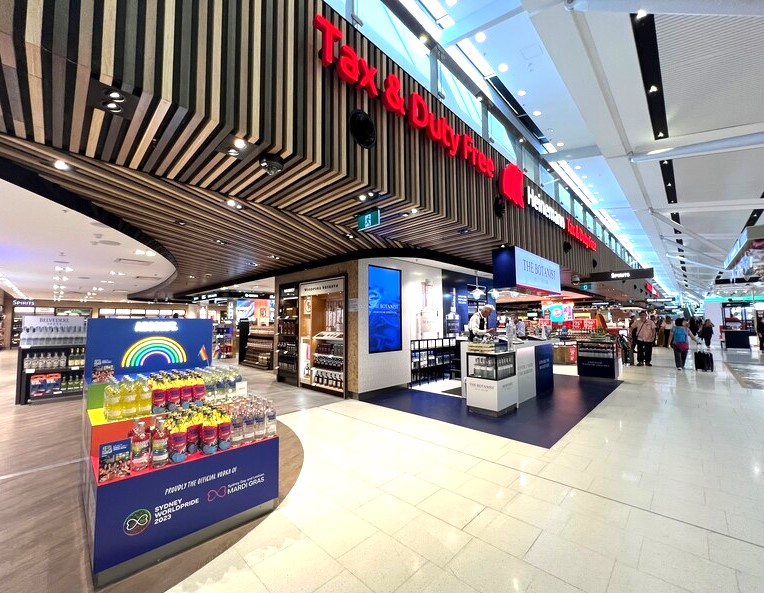
Tsoukalas has more insight than most travel retail leaders about frontline staffing issues and challenges. He began his working life at Sydney Airport, working as a part-time sales consultant in the days when long-time incumbent The Nuance Group held the duty free concession. Both he and his girlfriend of the time (now his wife) applied for and landed roles in the then newly created perfumes & cosmetics department. “So to come full circle back after so many years is remarkable and exciting,” he says.
Impressive Employees
Heinemann has also embarked on a major piece of work around service, dubbed ‘Impressive Employees’. This programme focuses on particular staff members who, as Tsoukalas neatly puts it, “know how to say sprinkle the hundreds and thousands on top of the ice cream”. They are team members who go above and beyond the call of duty free so that when a customer leaves, he or she remembers not only the product and the value but how they were made to feel.

“That ties back to being the most human-centric travel retailer in the industry. It’s really about humanising the experience,” Tsoukalas comments. “Duty free can become quite transactional. Especially pre-pandemic it was super easy. Lots of products, great prices, a big set of registers and a line-up.”
Now the game has changed in terms of passenger expectations regarding service levels. Meeting or exceeding those expectations while extracting more value out of those same customers is a key priority, he says.
“How do you do the most incredible service? Heavily supported by our regional team in Singapore, we’ve just introduced a brand new role here, which is retail trainer. We’ve had global teams come out and to do the Impressive Employee introduction. We’ve got training ambassadors on the shop floor. That’s a really big part of it but it’s twofold. One is personal development for our team, but two is that you create an experience for the customer that’s unforgettable. This is a really big part of our strategy moving forward.”
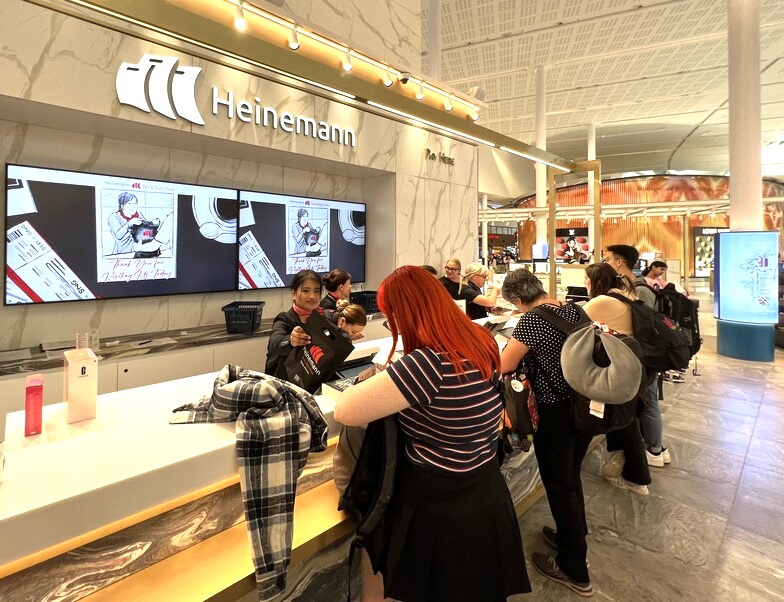
Domestic diversification
One big project may have been satisfactorily completed but a retailer’s job is never done and further exciting programmes await ahead. These are led by an Australian first, with the unveiling of a department store concept for Sydney Airport’s domestic terminals (T2 and T3), scheduled to open in July 2023. The concept spans more than 2,270sq m – 1,765sq m in T2 and 506sqm in T3 – and will offer a full suite of fashion, accessories, watches, jewellery, perfumes, cosmetics, skincare, confectionery and wines and spirits.
The project’s roots trace back to the pandemic, when Heinemann used the crisis to re-evaluate its retail offer of the future. “The fruits of what we did from a planning and strategic perspective during COVID materialised in the fact we will now play a part in a domestic airport opportunity, which really wasn’t on the radar three years earlier,” explains Tsoukalas.
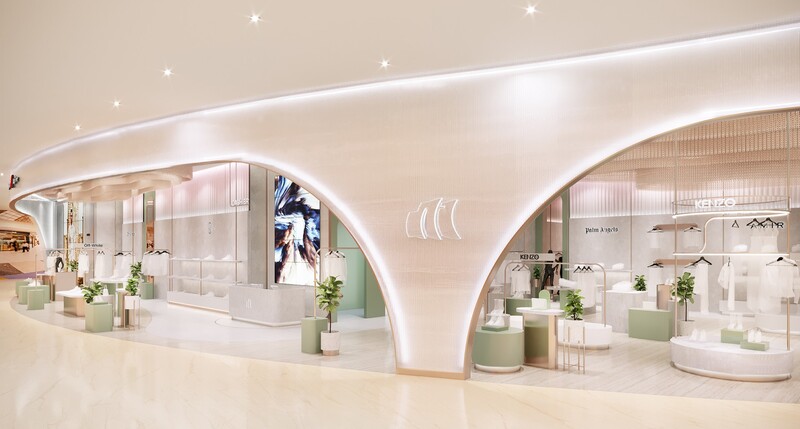
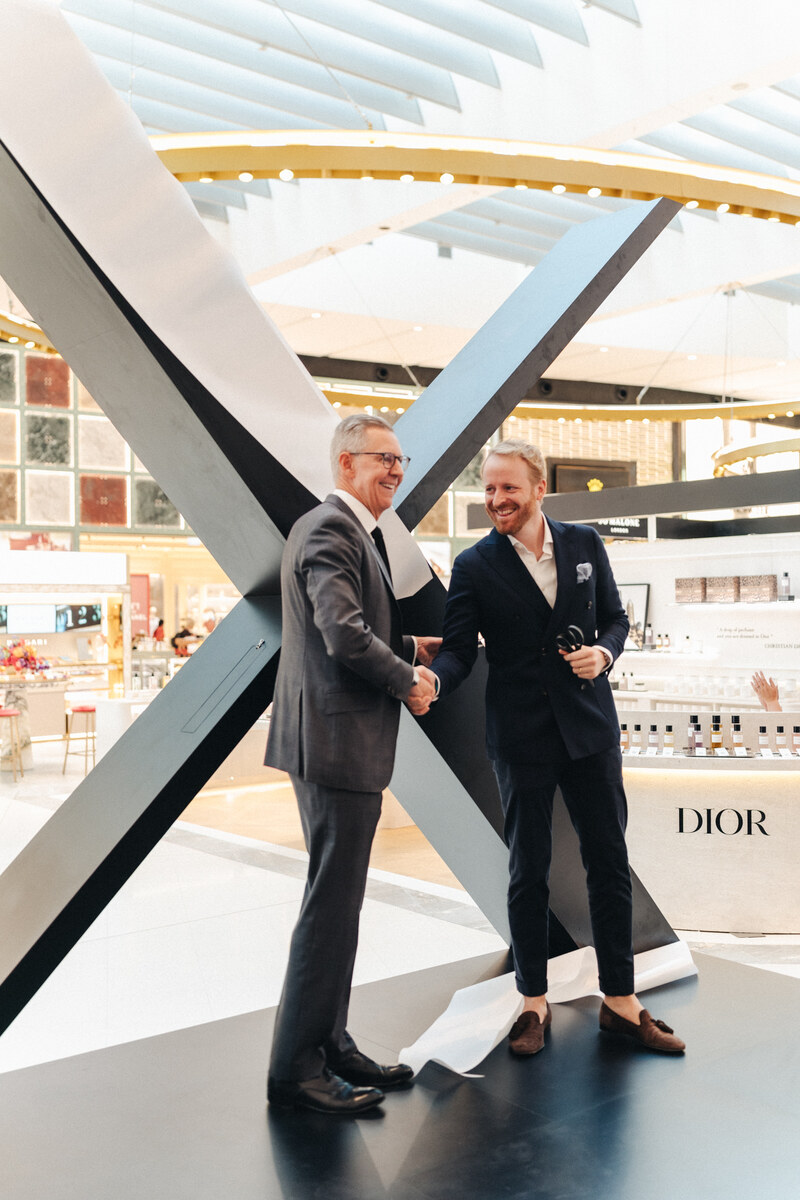
“We asked if there was an opportunity to capitalise on the way that passengers were travelling and the focus on domestic rebounding quicker than international. And lo and behold, we will launch two brand new department stores in Sydney Airport T2 and T3 in the middle of this year.
“I must say there has been an overwhelming response from the industry,” he continues. “People have asked, ‘Why hasn’t anyone thought about it before?’ It’s just a natural progression for brands to want to be present in a domestic terminal.
“We are very fortunate that we can showcase how we do retail in the region’s biggest airport internationally. So how do we then take that into a domestic terminal? There’s a really big focus on making sure that each of those terminals perform quite differently in terms of adjusting to pax profiles. So we will not take a cookie-cutter approach. Both the look and feel will be similar but there will be nuances that will change and the brand mix will change as well.”
T2, led by Virgin and complemented by Jetstar, Tiger and Regional Express, mostly serves holiday travellers, whereas T3 (Qantas and Qantaslink) is more about business travel. “We’re really excited, we think this is strategically a pillar that we want to play in across the region over the coming years,” says Tsoukalas.
Domestic terminal passenger traffic volume for the 12 months ending December 2022 was 20.9 million compared with 8.2 million international. Of that domestic base, 92% of are Australian, offering a major local retail opportunity. “You’ve got to hand it to Mark Zaouk and the Sydney Airport team in being visionary and saying ‘Why do we need little boxes when we can create a department store? Let’s go up against Myer and David Jones. But let’s do it in a smaller format and be able to really showcase brands and create an experience for passengers at domestic terminals.
“Our commitment always as a business is that we will continue to evolve our stores,” Tsoukalas continues. “For example, we have an initiative to introduce self-service points of sale (POS) to make the shopping experience more seamless. We believe there’s an opportunity in arrivals to have a mix of full-service POS and self-serve POS. Because we know that in arrivals, all passenger see is Customs. They want to buy quickly. They don’t want to stand in line.
“Then there are plans over the next 24 months to essentially redevelop each of our stores here at Sydney Airport, just to continue to evolve. What’s the consumer looking for? What’s the shopping experience they’re seeking? We need to address that and it’s our commitment in Sydney and we absolutely relish that opportunity to continue to invest.”
Wines, spirits and confectionery makeover
In line with that investment mentality, Heinemann is eyeing an ambitious refresh of its wines & spirits and confectionery zones to the left of the walkthrough store. Not that the existing space (as the photos show) looks tardy, Tsoukalas emphasises. “I stood back yesterday and it still looks incredible – even at seven years old, it still looks new and fresh. But what’s next? How do we evolve with the customer that is purchasing spirits, wine and confectionery? What are their expectations of brands?
“How do we become more of a trusted advisor in that space as boutique wines and spirits continue to grow? With that comes an expectation in terms of service and environment. So we’re in the initial stages of planning what that could look like for the next 12 months.”
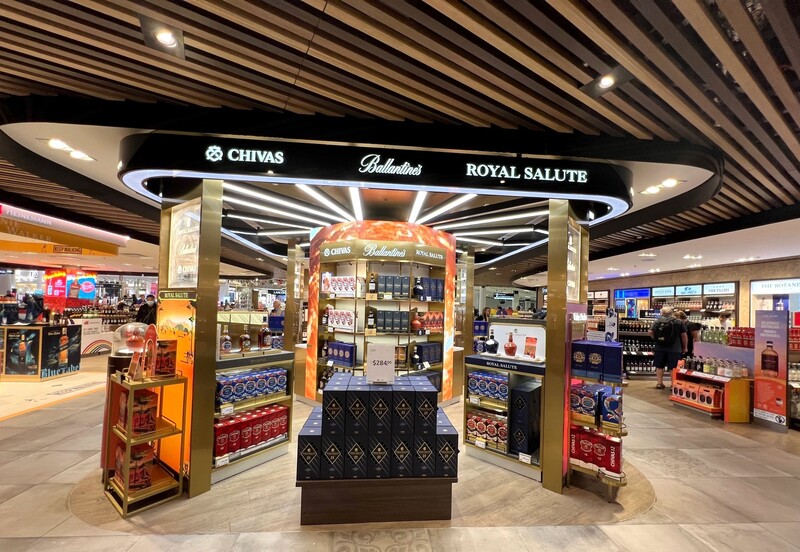

Integral to that renewal will be an emphasis on Australian spirit brand houses such as Archie Rose, Manly Spirits, Four Pillars, Otter Craft Distilling, Starward and many others. “Brands such as Archie Rose and Four Pillars are really big, big businesses,” says Tsoukalas. “So we are super excited about how we can evolve that space.”
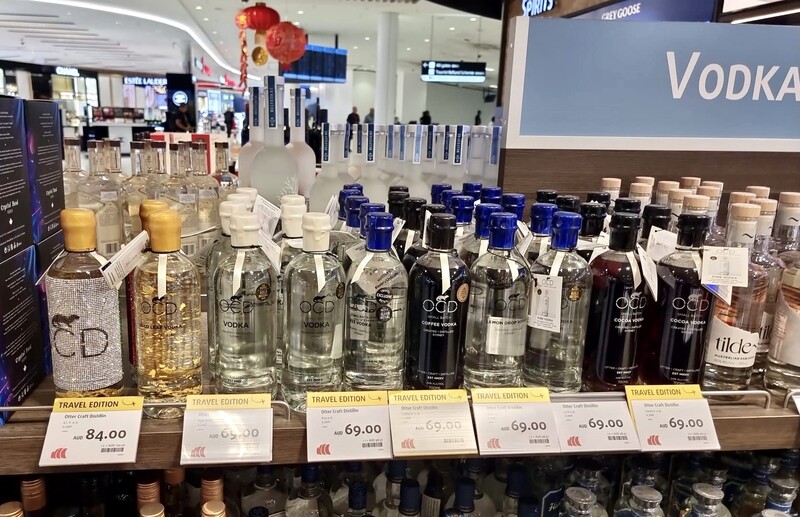
Fusing digital and physical
Digitalisation is another priority but as a complement not a replacement for the in-store experience. “We have to embrace the digital age,” says Tsoukalas. “However, it’s not just about online now but how do you fuse digital into the physical. That’s really important for us. Today, we do it relatively well. From a digital communications perspective, we’ve got a whole lot of screens throughout the store to highlight product.
“But the next evolution is how do I interact digitally? For example, how do I introduce a fragrance finder that’s digital and on a screen? So a customer can I say, ‘I used to wear this, I want to buy something similar’.” Heinemann is working with Michael Edwards, the famed founder and author of Fragrances of the World, to develop the concept.
In terms of digital commerce, Heinemann has a fully-fledged online platform that allows customers to click and collect, then pick up in arrivals or departures. They can do the same in the departures store collecting in arrivals when they return to the country. The company is also working to further incorporate and strengthen the successful Heinemann and Me loyalty programme, tackling the inevitable challenge posed to any such platform by the fact that many passengers are infrequent travellers.

But in-store experience will continue to come first Tsoukalas insists. “We want customers to come into the store. Otherwise there is a juxtaposition of building a brand new store with all this experience, all of these moments and all this surprise and delight, and then forcing them to want to go online.
“However, there’s definitely a digital convenience piece. So if I ordered online and picked up in store, that’s the perfect scenario, because I can get customers to engage and spend time in store. So it’s a service and a convenience that talks to one of the key pillars of our strategy, but it will never replace what we want to do in-store.”

As a fascinating conversation draws to a close, I ask Tsoukalas if on such a red-letter day for Heinemann Australia he has any final message for the travel retail community. He reflects for a moment and then responds, “We want to turn travel time into valuable time. We want to be the most human-centric retailer. Everything that we do is anchored by this statement – for passengers, team, partners. And you know, travel is back. It’s different, but it’s back.”
It is indeed. And if anyone remained in doubt over the fact, they just need walk the new-look Heinemann store and the Sydney Airport luxury precinct, a world-class shopping emporium brimful of renowned international and Australian brands and packed with travelling shoppers. There’s Pride on display all over Sydney and plenty of it too, albeit of a different and richly deserved kind, at Heinemann Australia.
*Source: Reconciliation Australia
Postscript
The symbolism was undeniable, the celebratory mood intoxicating, the Sense of Place unmistakeable.
As hundreds of guests at the opening of Sydney Airport Terminal 1’s luxury precinct and Heinemann Australia’s enhanced luxury beauty, fashion and accessories store sat at dinner in a marquee set up on the airfield, the welcoming remarks were regularly punctuated by the sounds and sights of planes landing at regular intervals.

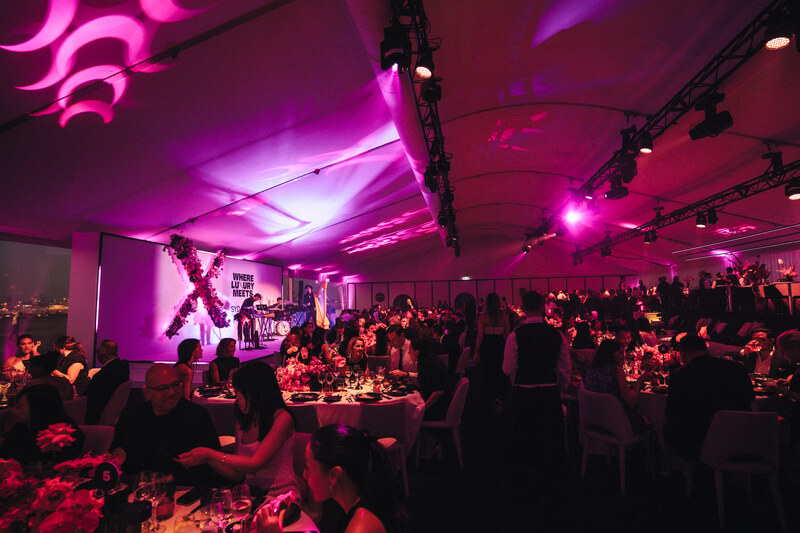
Those visual and oral interruptions couldn’t have been more welcome, for they told everyone what events earlier in the day had confirmed. After three COVID-ravaged years, travel – and with it travel retail – is truly back.
The Sense of Place, nicely encapsulated in the retail expansive retail offer, was laid bare in a different but powerful manner at the dinner as Aunty Noeleen Timbrey, representing the La Perouse Aboriginal Community, delivered the Welcome to Country.
The Welcome to Country ceremony not only upholds Aboriginal and Torres Strait Islander cultural protocols but is a telling reminder of whose these lands belonged to for centuries.
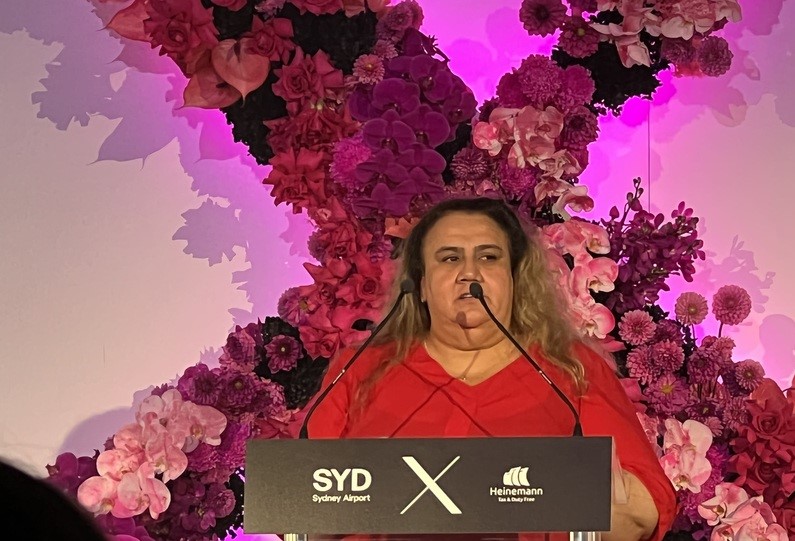
“Our people have been living here since time began,” Timbrey said, before reminding the audience of the displacement that had been forced shamefully upon them in the colonial era. “We are part of the world’s oldest living culture… thank you for respecting that culture,” she concluded.

Sydney Airport CEO Geoff Culbert duly acknowledged the Aboriginal people of coastal Sydney, describing them as the “traditional custodians of this land” and paid his respects to their elders past and present. What followed was a marvellously erudite evocation of what just about everyone in the aviation, tourism and travel retail sectors must have felt through the darkest days of the pandemic.
Culbert took guests back to November 2019, the last time Sydney Airport had hosted an event on the airfield, on that occasion to celebrate the gateway’s 100th birthday. “It was a beautiful spring evening, we had A380s rolling past, the Sydney Symphony Orchestra was playing and I thought to myself, ‘Wow, it doesn’t get much better than this.’ ”
Everyone present knew what was coming next but that awareness didn’t lessen the impact. “Three months later COVID hit and I’m standing in the middle of the terminal the place was full of military in full camo gear and health department in full PPR, you couldn’t hear any aircraft, the only sound was tumbleweed and I thought to myself, ‘Wow, it doesn’t get much worse than this.’ ”
COVID “totally sucked”, Culbert said, probably the pithiest best the pandemic’s impact on life and business I’ve heard articulated by an industry leader. Yeah, COVID sure did.
That was Culbert’s segue to the partnership with Heinemann which had been tested – at times sorely as the latter’s Co-Ceo Raoul Spanger later acknowledged – by the crisis but had ultimately emerged stronger. As had the relationship with many of the world’s leading luxury brands.
“Our vision was pretty simple,” he said. “We wanted to go back to the golden age of travel. We wanted to bring glamour back to travel. We wanted travel to be an experience not to be endured but one to be actually savoured. Not an airport experience but a luxury shopping experience in its own right.
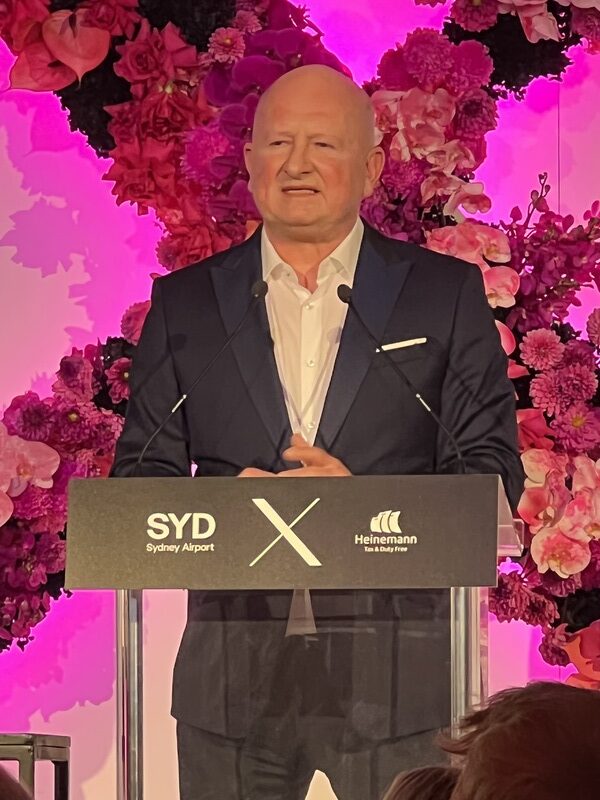
“I stand now in the middle of the luxury precinct, and I look at the streetscape of 20 of the world’s most iconic retailers, double height stores with Fifth Avenue facades anchored by the Heinemann facility which unveils more of the world’s best and greatest brands.
“It feels to me that we’re on our way to realising that vision. But the good news is that we’ve only just begun,” Culbert continued.
“So we want to take it to the next level. From personal shopping to VIP rooms to digital platforms. We want to take the best of what’s happening outside of the airport in luxury retail. And we want to bring it in to Sydney Airport – we want to break the paradigm of airport shopping, and completely revolutionise the airport shopping experience.
“We have 44 million people who come through these doors every year. And we want to create something truly, truly special for them.”
Next up was Heinemann Co-CEO Raoul Spanger, “In the Heinemann environment, this is the benchmark of our shops worldwide,” he said to applause.
As he talked of the day’s “sensational occasion”, he was almost drowned out by the roar of an aircraft taking off, a different kind of symphony to that played here 39 months earlier but perhaps even sweeter sounding given the intervening circumstances.
“2022 was a great year. Why? Because people wanted to be free. People want travel, people want air travel. And they also want to buy beautiful products,” Spanger concluded.
As if by provenance to reaffirm his sentiments on the desire for travel, a giant Singapore Airlines A380 loomed on the tarmac behind him, the symbolism as joyous as it was palpable. ✈





